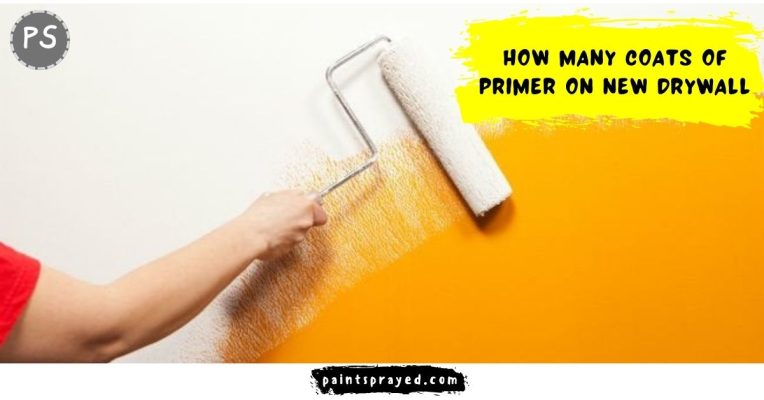Typically, two coats of primer are recommended for new drywall to ensure proper sealing and uniformity of the surface.
However, the exact number of coats may vary based on the specific conditions and requirements of the project.
Such as the type of paint or finish to be applied, the condition of the drywall, and any necessary touch-up work.
It is best to consult with a paint professional or manufacturer to determine the appropriate number of primer coats for your specific project.
Do you need two coats of primer on drywall?
Yes, it is recommended to apply two coats of primer on new drywall for the best results.
The first coat helps to seal the surface and provide a base for the second coat, which helps to even out the surface and improve the final finish.
This is especially important for new drywall, which often has excess residue from the manufacturing process and can absorb paint differently from one area to another.
Two coats of primer can help to ensure a uniform surface for the final paint or finish, improving the look and durability of the final product.
Is 1 coat of primer enough?
One coat of primer may be sufficient for some projects, but applying a second coat can provide better results.
A single coat of primer can help to seal the surface and provide a base for paint, but a second coat can further improve the uniformity and coverage of the surface.
This is especially important for new drywall, which may have different absorption rates in different areas and can benefit from additional sealing and uniformity.
That being said, the exact number of coats required depends on several factors such as the type of primer and paint being used, the condition of the drywall, and the desired finish.
It is best to consult with a paint professional or the manufacturer’s guidelines to determine the appropriate number of coats for your specific project.
How many times should you prime new drywall?
It is recommended to apply two coats of primer on the new drywall.
The first coat helps to seal the surface and provide a base for the second coat, which helps to even out the surface and improve the final finish.
Two coats of primer can help to ensure a uniform surface for the final paint or finish, improving the look and durability of the final product.
However, the exact number of coats required can vary based on several factors, such as the type of primer and paint being used, the condition of the drywall, and the desired finish.
In some cases, additional coats of primer may be necessary to achieve the desired level of coverage and uniformity.
It is best to consult with a paint professional or the manufacturer’s guidelines to determine the appropriate number of coats for your specific project.
Do you need 2 coats of primer?
It is generally recommended to apply two coats of primer when priming new drywall or other surfaces.
Two coats of primer can provide better coverage and uniformity compared to a single coat, improving the final finish of the paint or other coating.
However, the exact number of coats required may depend on several factors, such as the type of primer and paint being used.

The condition of the surface being primed, and the desired final finish. In some cases, additional coats of primer may be necessary, while in others a single coat may be sufficient.
It is best to consult with a paint professional or the manufacturer’s guidelines to determine the appropriate number of coats for your specific project.
Can I put primer directly on drywall?
Yes, you can put primer directly on the drywall.
In fact, priming new drywall before painting it is highly recommended as it helps to seal the surface, improves paint adhesion, and provides a uniform base for the paint color.
It is important to use a primer specifically designed for use on drywall and to follow the manufacturer’s instructions for application.
How long does it take for primer to dry on drywall?
Typically, a primer on drywall takes about 1-2 hours to dry to the touch and about 24 hours to fully cure.
However, the drying time may vary depending on the humidity, temperature, and the type of primer used. It’s best to follow the manufacturer’s recommendations for drying time.
Do you sand drywall after priming?
It is not necessary to sand drywall after priming, but it can be beneficial in some cases to help achieve a smoother surface and enhance the adhesion of the topcoat.
Light sanding using fine-grit sandpaper can help to remove any minor imperfections in the primer or drywall surface, improving the overall appearance and uniformity of the finished wall.
If sanding is done, it is important to vacuum or wipes down the surface to remove any sanding dust before applying the topcoat.

Matthew Edward is a professional painter who loves to paint and wants to share useful tips and tricks which he had learned in many years of experience in painting. He also used many products that can be used for painting he has tried and tested each and every product to give an unbias opinion about it in his review. This blog is very useful for those newbies who want to learn painting without making mistakes.






